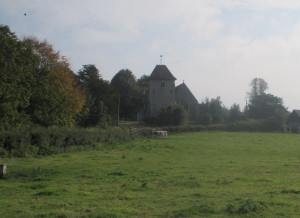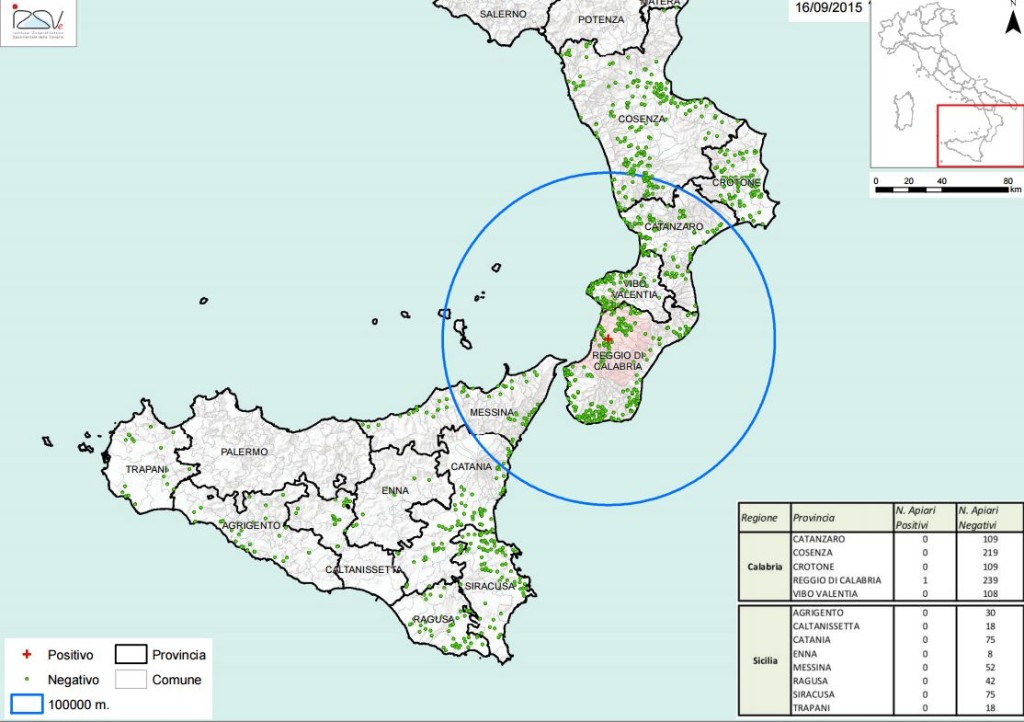Blog – bees, beekeeping & other sticky subjects
Nosema ceranae – emergence & hope
This week Vita begins lab tests in Greece for a new treatment for Nosema ceranae, the second greatest threat to honeybees after Varroa in some countries. Earlier tests have proved promising, so it’s time to go further and perhaps try it in the field later, at a time of year when the threat is greatest.
Coincidentally, I was reminded of my introduction to Nosema ceranae yesterday while walking across the Berkshire countryside in England and stumbled across an apiary I remembered from a few years back. (Public footpaths across agricultural land are common throughout England and Wales, so it is possible to explore the countryside and get into all sorts of nooks and crannies.)
It was 2009 and I was leading a group of local beekeepers in a spring apiary inspection of about a dozen hives. The apiary was beautifully situated in a clearing in front of a patch of woodland that faced onto a wide expanse of arable land. The bees were in a very poor state, but there were no obvious signs as to what was wrong.
We ‘ummed and ahhed’, but came to no firm conclusions on the day. Nosema apis (the older version) was considered, but since there was no evidence of dysentery on the front of the hives, it was discounted. Similarly there were no signs of excessive Varroa populations or of either American or European Foulbrood. We left the apiary mystified. We didn’t then know much about the new version of Nosema ceranae that was emerging and proving to be a killer in other countries. On reflection, we now think the new variant was the culprit.
The elderly, experienced beekeeper was distraught. I offered him a spare colony from my own apiary to help him rebuild and he gladly accepted. But the problem was how to collect it. He was an agricultural worker and had a vehicle that because it used discounted agricultural (red) diesel was prohibited from travelling on public roads except “on rare and very limited occurrences”. He tried plotting a route of 30 kms across English countryside avoiding public roads, but failed. I had visions of him churning up fields and gardens on his way to me. I was relieved when he eventually he turned up in a borrowed car using the public highways.
Since 2009, Nosema ceranae has gained a much higher profile and is now thought to have been the cause of the deaths of huge numbers of colonies in Spain in 2001. It has probably been around for 20 years having jumped from the eastern honeybee (Apis cerana), but wasn’t identified as being distinct from Nosema apis until 2007. Whereas Nosema apis has seasonal peaks and falls and is relatively easy to identify and therefore control, Nosema ceranae is less obvious, can be virulent all season and reaches parts of the bee that Nosema apis cannot.
VitaFeed Gold has proven very effective in boosting honeybee immune systems, particularly in colonies affected by dysentery. The new potential treatment under test could provide a very effective tool in tackling Nosema ceranae directly. Vita will report back on progress.
Turlough
Vita’s Guest Beekeeper Blogger
The other Queen Bee at Downton Abbey

Heaven’s Gate folly with Highclere Castle visible through the arch and a feral colony in residence to the top left of the arch.
With the return of Downton Abbey to British television screens, viewers might be surprised to learn that Dame Maggie Smith (aka Dowager Countess of Grantham) is not the only Queen Bee on the estate.
The fictional Downton Abbey is set in the real-life Highclere Castle which is just 25 kilometres from Vita’s HQ.
Perched high above the Castle is a glorious folly, Heaven’s Gate, built in 1737 by Robert Herbert and restored in 1997 by George Herbert, the 8th Earl of Caernarvon.
And in a hollow in the crumbling brickwork is a feral colony of honeybees, one of very few known in the area. How long can it last in the face of the Varroa mite? Can the withering comments of that Queen Bee offer any defence?
Turlough
Vita’s Guest Beekeeper Blogger
Small Hive Beetle returns
Thanks to some translating work from the International Bee Research Association (IBRA), we have an update of the latest on the spread of Aethina tumida, the Small Hive Beetle (SHB).
Last autumn we reported on the first appearance of SHB in southern Italy. The last case was found on 23 December 2014 and, since there were no further reports until now, the hope was been that it hadn’t spread. But the latest news is not good.
This week adults and larva were found in an Apiary in Figurelle, a village in San Martino di Taurianova, Calabria. SHB was found in eight of the 32 colonies in the apiary. Last year’s burnings appear not to have been fully effective.
Here, in Italian, is the list of SHB sightings to date and the map (original pdf from Istituto Zooprofilattico Sperimentale delle Venezie here) is below:
Don’t forget, Vita’s Beetle Blaster gives early warning of SHB’s arrival.
Wasps beware, ApiShield is here
 It’s autumn and here in southern England it’s been quite a year for wasps.
It’s autumn and here in southern England it’s been quite a year for wasps.
Although we do not think the Asian Hornet (Vespa velutina) has arrived, ApiShield is providing a very useful tool to stop wasps bothering the honeybees.
ApiShield not only lures wasps, but also robber bees. It’s a simple process to dispose of the carcasses on frequent or infrequent apiary visits.
Unwelcome visitors are lured into the sides of ApiShield by the smell of bees and honey, but then cannot escape.
You can find full information about ApiShield here.
In search of a Drone Congregation Area SatNav
Since the end of June, I’ve been pondering the factors that might describe a Drone Congregation Area (DCA), those mysterious locations where honeybee queens meet up with drones to mate.
Having found eight in my local area, I can only say that I have a good idea of where to look for DCAs in this area of chalk downland and that broadly my findings agree with South African research, rather than British or German.
The Ruttners working in Germany in the 1960s emphasised visual cues in the landscape (flying to maximum light intensity on the horizon and then coming to a visual dead end), while Cooper in Britain in the 1980s focused on rising air currents. Belatedly I have come across GD Tribe’s work in South Africa in the 1980s in which he identified air turbulence and elevations.
My site findings tend to agree mostly, but not entirely, with those of Tribe in South Africa. A local peak in the landscape, no vertical obstructions and especially the presence of a breeze were the common denominators in my discoveries. Aspect didn’t seem to matter, light intensity didn’t quite match and I couldn’t quite measure rising air currents or identify where they might be.
Where my observations differed from almost everyone was that the drones seemed to prefer a height of about three metres above the ground, not the much greater heights up to 10 metres experienced elsewhere.
Locations of DCAs may be so difficult to define because honeybees may react differently in different topographical environments. Indeed even different types of honeybee may well have different behaviours: researchers have already discovered that Italian drones and Carniolan drones congregate at different heights above the ground .
In any event, in my study area populated by local mongrel bees, I wouldn’t be surprised if drones leave colonies and fly into the wind (to make sure they have fuel to return) until they find a suitable area to assemble. I also get the impression they like to chase queens into the breeze – presumably that makes mounting the queen rather easier (think of cycling as slowly as possible into and with a breeze!)
Next season, I plan to visit areas of different topography and areas where there are more known honeybee colonies. The area in which I have been looking is relatively sparsely populated, so I am intrigued to know if I will get an even greater drone response next year at the peak of the mating season and on the edge of a town where there are known to be quite a few colonies.
If you want to follow the 2015 story from the beginning, here are the links:
1 July 2015 In search of a mate
2 July 2015 Drone Congregation Areas
7 July 2015 Another Drone Congregation Area
20 July 2015 Video of Life in a Drone Congregation Area
28 July 2015 Do drones assemble above prehistoric sites?
3 August 2015 Drone Goal?
10 August 2015 Rediscovering the first recorded Drone Congregation Area
8 September 2015 In search of a Drone Congregation Area SatNav
27 October 2015 Hilltopping
Turlough
Vita’s Guest Beekeeper Blogger





